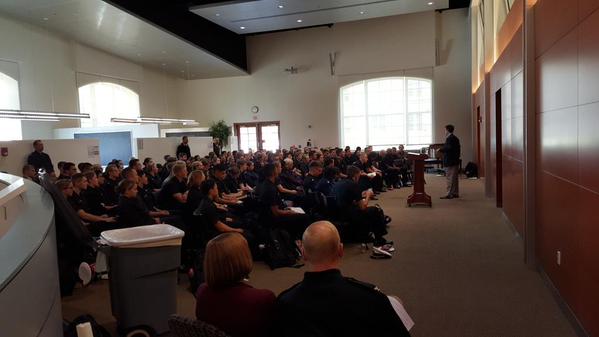Not long ago, I had the honor of speaking at the U.S. Naval Academy in Annapolis, Maryland. After that experience, I can safely say that if you’re ever feeling cynical about today’s youth or our collective future, go visit one of our service academies. You’ll find some of the brightest young people in the country choosing to challenge themselves daily in their studies and lives—not just for their own wealth but for the good of our country.

Until fairly recently, leadership in this country was thought of as largely a military discipline. It makes sense, considering that even more than most pursuits the military requires order, teamwork, and common purpose. And unlike most other organizations, in a military unit, lives can literally depend on good leadership.
My visit to the academy reminded me of why military leadership remains such a prominent model: because it’s built on the time-tested basics. To draw some examples from the academy:
Discipline.
The Plebes (freshman) may have a schedule that looks something like this: 6am Outside PT and Training, 7am, Morning Formation, 7:15am Breakfast, 7:45am Morning Classes etc.. Their day is tightly structured around classwork and study, training, and activities. Meals are eaten as a group, and the only free time on a typical day is the hour before Taps sounds at midnight.
Team spirit.
Much like the houses in the Harry Potter series, the 30 companies at the academy earn points for academic, professional, and athletic achievement. The company earning the most points in the course of a year—the Color Company—is recognized during Commissioning Week and receives special privileges in the following year.
Integrity and honor.
The academy’s Honor Concept is central to the life of each student. The Honor Concept isn’t held up as an ideal but as the minimum acceptable standard. It consists of three sets of statements:
Midshipmen are persons of integrity. They stand for that which is right. They tell the truth and ensure that the truth is known. They do not lie.
They embrace fairness in all actions. They ensure that work submitted as their own is their own, and that assistance received from any source is authorized and properly documented. They do not cheat.
They respect the property of others and ensure that others are able to benefit from the use of their own property. They do not steal.
Responsibility.
Built into the curriculum is a program of increasing responsibility that allows midshipmen to learn, make mistakes, and grow as leaders in a safe environment. By their final year, they’re experienced in making decisions that directly affect others, teaching less advanced students, and heading up teams.
Commitment to serve.
Before they even apply to the academy, prospective students are required to demonstrate their commitment to studying and serving at the academy. Prerequisites are rigorous, and a nomination (most often from a senator or representative) is required. During the program, a significant amount of each summer is spent on assignment. And life after graduation means commissioning as an Ensign in the Navy or Second Lieutenant in the Marine Core, followed by a minimum of 5 years active duty service.
You can observe many of these principles not only at our service academies but in ROTC and JROTC units, Civil Air Patrol squadrons, and of course in active duty, reserve, and National Guard Units. The people who make up these organizations deserve our gratitude—not only for their service but also for what they demonstrate daily about leadership.
